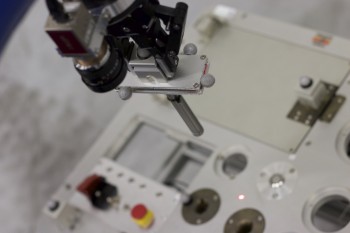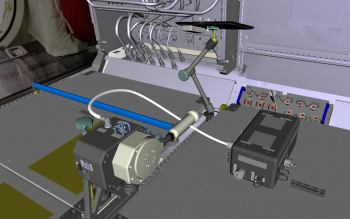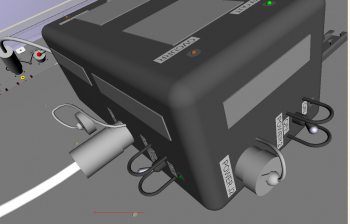On flight day six, Monday, ESA astronaut Andreas Mogensen will control a robotic “hand” on Earth while floating on the International Space Station. The Centaur robot is at ESA’s technical heart ESTEC in The Netherlands and features a force-feedback peg that will allow Andreas to feel objects on Earth. His task is to test the system by using a joystick to push a peg into a hole requiring sub-millimetre precision.
The operational setup for this experiment is complicated and requires setting up the hardware, software and network that connects the Space Station to a satellite to Houston, USA, to the Columbus Control Centre to ESTEC – and back for return signals.
Astronauts often watch refresher training video instructions shortly before an experiment starts. These videos below are the actual On Board Training that Andreas used in the past as refresher training:
Visual training is effective as seeing things help visualise and remember processes but there is room for improvement over traditional video. When humans venture further afield in our Solar System, uploading large video files to Mars for example, will be time-consuming and take most, if not all, of the limited bandwidth. In addition, video training is not interactive so astronauts cannot quickly go to a step, or check a previous step in the procedure without searching manually. Videos can only be taken if high-fidelity ground models exist and many are not faithful replicas of the experiment as it is in space. Lastly, last-minute changes to an experiment setup can require reshooting the whole video with a camera man, researcher and hardware.
To solve these inconveniences ESA is developing 3D visualisation training called 3DVit that should solve the problems listed above. Combining written steps with a precisely computed virtual Columbus space laboratory astronauts can follow a procedure in any way they want, zoom in, zoom out, step-by-step, rewind, pan, look back and so on. As only the procedure and new models if any need to be sent to the Space Station, the files are much smaller than video and can be changed more easily.
To test 3DVit Andreas, will setup the hardware for Interact using only the new software. He has not had prior training on installing the joystick, an arm to hold the tablet, powering the hardware and plugging it into the network. At 19:20 GMT on flight day 5, Andreas transferred the files from a Station computer to his tablet computer. At 10:25 GMT the next day he will run the 3D Visual Training using his iPad before setting up the Interact experiment.
With a bit of setup on your device, you can run through the 3DVit training in a browser or even on your IOS device with the Cortona3D app. Go through the same steps Andreas will do in space to setup the Interact space experiment.
You will need to install the Cortona3D viewer from the publisher’s website on your Windows PC and then, once the browser add-on is activated you can start the 3DVit training session on you computer. The link includes a version for tablets but this requires the full Cortona3D app for iPad that is not a free download. A free version exists with demo content of other On Board Training.





Discussion: no comments